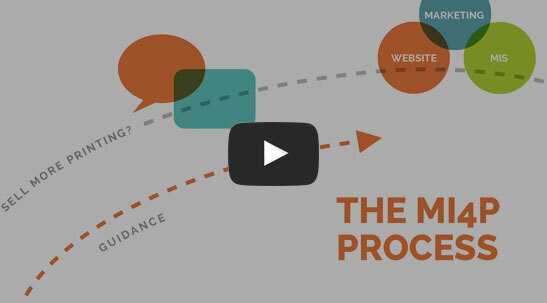Small Orders, Big Decisions: A Brighter Future

In last month’s article, Sam Lewis began transforming Print Perfect’s operations to better handle the influx of larger projects. Now, he reflects on how far his business has come—from struggling with low-margin jobs to thriving with a balanced, efficient workflow. As Sam looks ahead, he considers new ways to strengthen his team and grow his business sustainably. In this final installment, we see the culmination of Sam’s journey and the lessons that have set him up for a brighter future. Part 6: Small Orders, Big Decisions: A Brighter Future As Sam closed up shop one evening, he took a moment to reflect on how far Print Perfect had come. What had once been a simple print shop was now a thriving business capable of handling a range of jobs, from the smallest flyers to complex, high-volume orders. Implementing minimum charges, streamlining operations, and focusing on building deeper client relationships had all played a part in this transformation. But he knew the journey wasn’t over. The Path So Far Thinking back, Sam could hardly believe the challenges he and his team had tackled. From small, low-margin copy jobs to more efficient, large-scale projects, each step had required difficult decisions and careful
Small Orders, Big Decisions: Streamlining for Profit

In the last installment, Sam Lewis showed how small jobs could lead to big opportunities, turning Print Perfect into more than just a quick-service print shop. With larger projects now coming in, Sam realizes his shop’s operations need an overhaul to handle the increased demand efficiently. In this article, Sam explores how streamlined workflows and automation can help his team stay productive and profitable while maintaining the quality his clients expect. As Print Perfect began taking on more substantial projects, Sam quickly realized the need for a streamlined workflow. While his new strategies for attracting larger jobs were working, the volume was straining his team. “If we’re going to keep up,” he thought, “we need to boost our efficiency—without sacrificing quality.” Identifying Bottlenecks Sam started by observing day-to-day operations closely, noting where time and resources were being lost. He quickly saw patterns: small jobs with multiple adjustments, delays in approvals, and time-consuming communication over project specifications. Realizing he couldn’t ignore these bottlenecks, he gathered the team for input. “I want to hear from everyone,” Sam began at their meeting. “Where do you see us getting slowed down the most?” Laura was first to chime in. “We spend a lot
Small Orders, Big Decisions: Turning Small Jobs into Big Wins

Previously, Sam Lewis tackled the challenge of managing client expectations after implementing minimum charges at Print Perfect. With the policy now in place, Sam begins looking ahead to new opportunities. Instead of viewing small jobs as obstacles, he starts to see them as stepping stones for growth. This month, Sam explores ways to build deeper relationships and turn low-margin interactions into gateways for larger, more profitable projects. Can these small wins pave the way for big success? Part 4: Small Orders, Big Decisions: Turning Small Jobs into Big Wins Sam had spent weeks refining Print Perfect’s approach to minimum charges and client communication. But as he looked over his books, he noticed that while the small jobs had become more manageable, they still weren’t driving growth. “There has to be a way to turn these into something more,” he thought, pondering how to make low-margin work a stepping stone for bigger projects. Finding Value Beyond the Profit Margins One afternoon, Sam discussed his thoughts with Laura. “I’m wondering if we’re missing out on opportunities with some of these small jobs,” he began. “If we could turn these clients into repeat customers for larger projects, that could really make a difference.”




